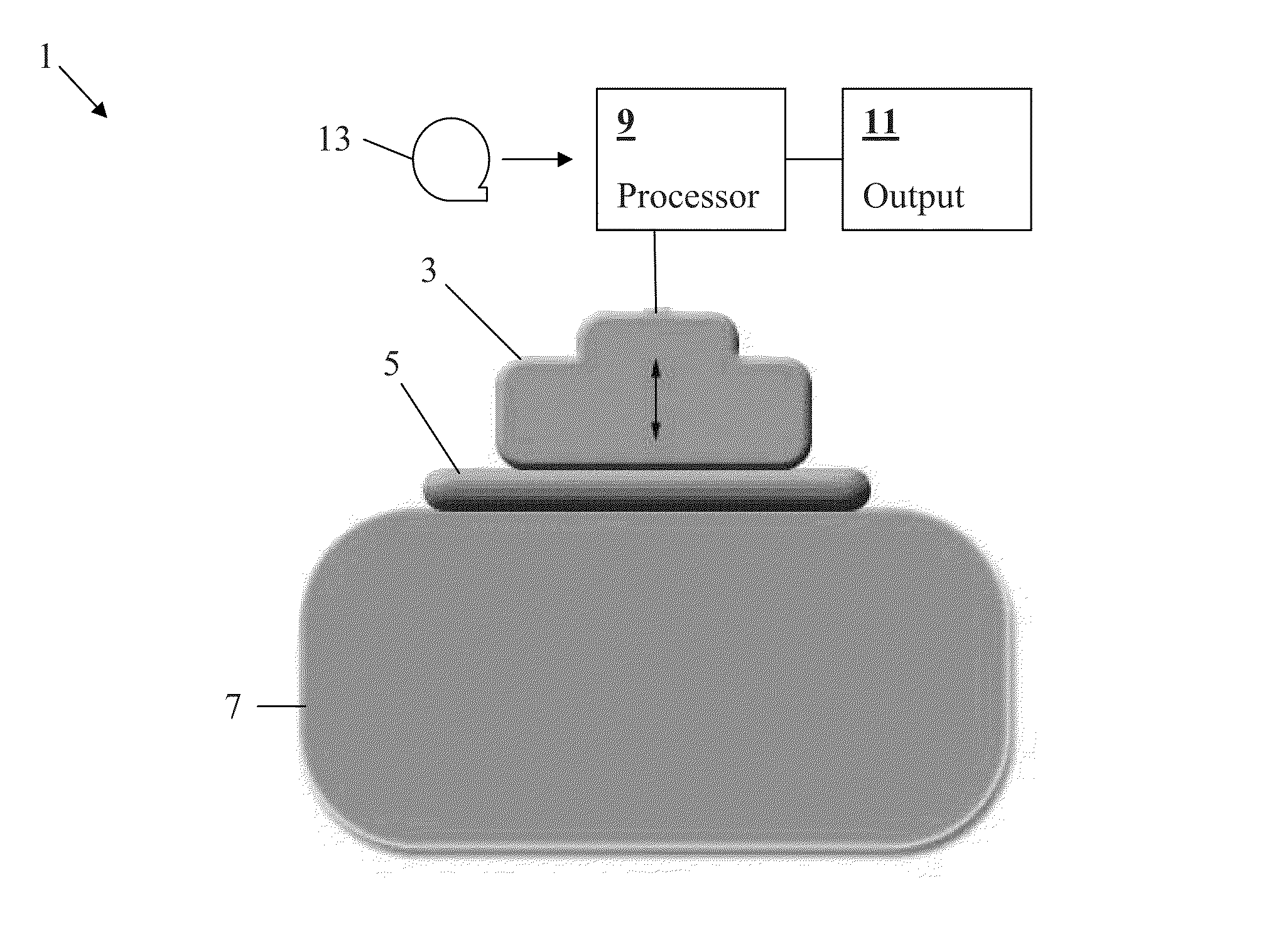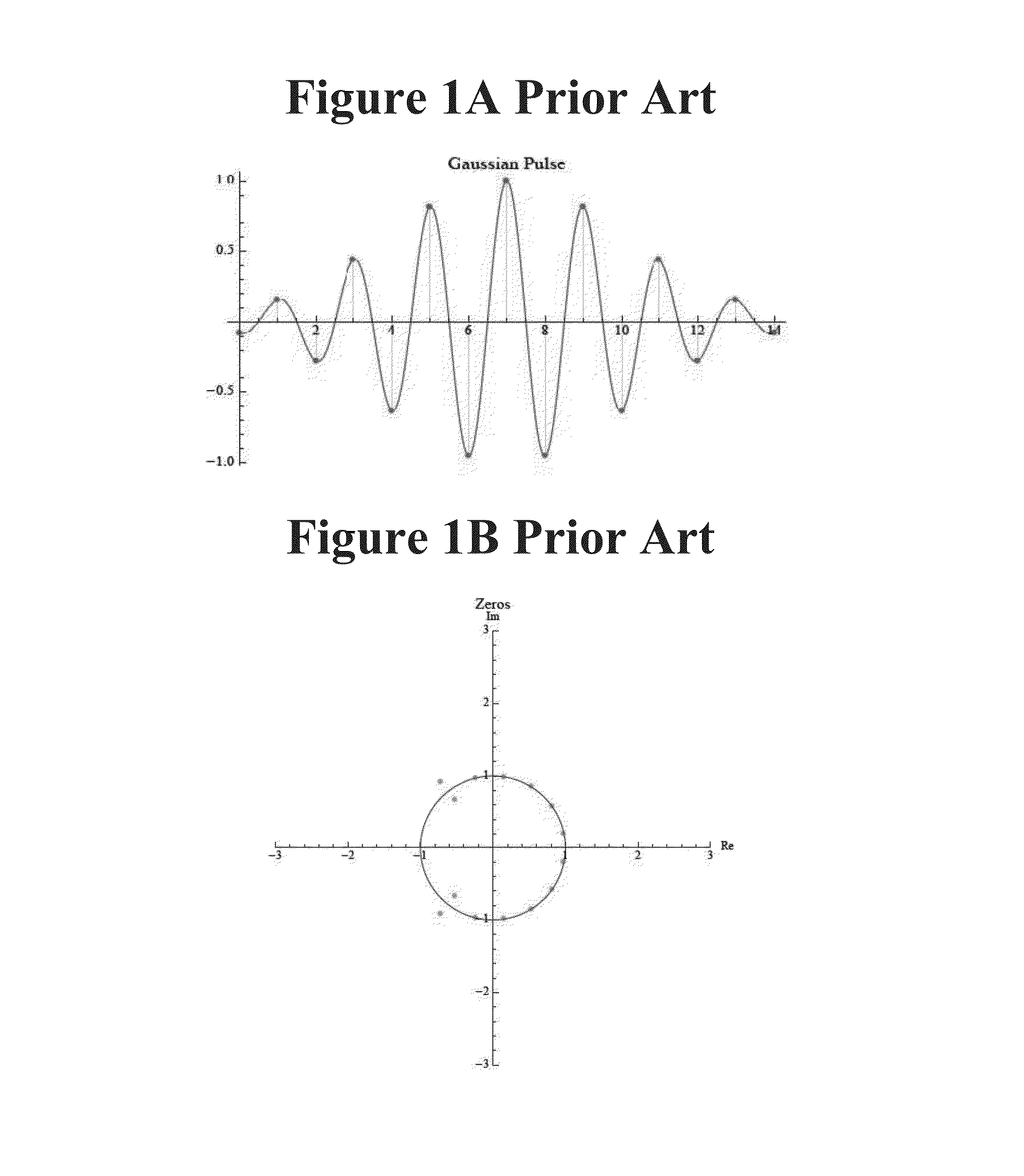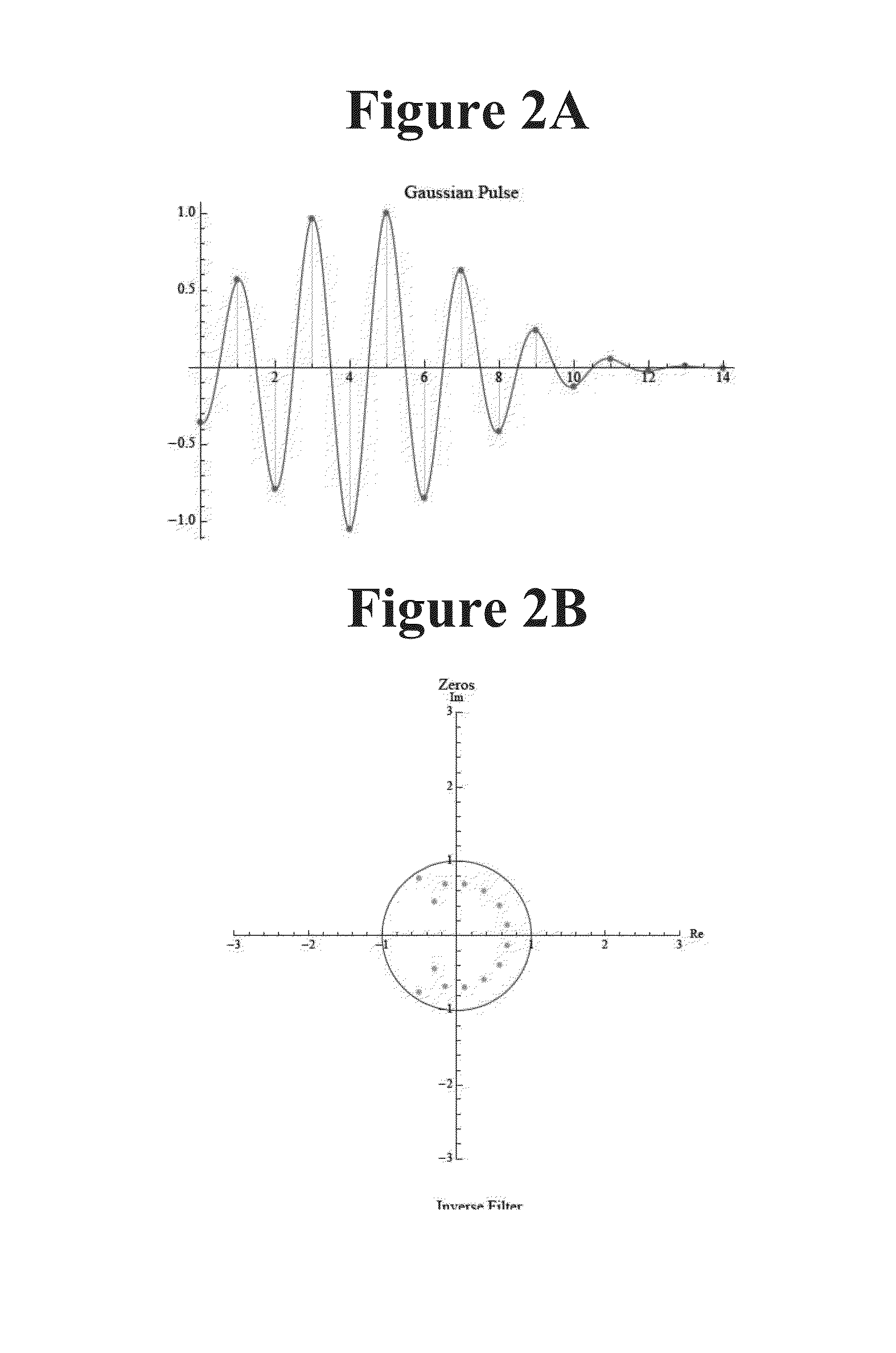Superresolution imaging of scatterers in pulse-echo imaging
- Summary
- Abstract
- Description
- Claims
- Application Information
AI Technical Summary
Benefits of technology
Problems solved by technology
Method used
Image
Examples
Embodiment Construction
[0061]A preferred embodiment will now be set forth in detail with reference to the drawings, in which like reference numerals refer to like elements or steps throughout.
[0062]We begin with a discrete version of Equation (1) with the inclusion of noise. Without loss of generality, the 2D version is given as:
e[n]=p[n]s[m]**R[n,m]+g[n,m] (2)
[0063]where g[n,m] is additive noise.
[0064]The objective is to reconstruct the scatterers or reflectors R[n,m]. For this we turn to the Z-transform of p[n]. The one-sided Z-transform of p[n] is given by (Oppenheim and Schafer 1975):
P(z)=∑0∞p[n]z-n(3)
[0065]For a pulse of length N, the Z-transform is a polynomial of order N−1, which can be factored into roots, giving zeros of the Z-transform. The inverse filter, given by the transform 1 / P(z), will convolve with p[n] to produce an impulse. However, it is clear that the reciprocal nature of P(z) and its inverse filter transform implies that the zeroes of the pulse transform P(z) become the poles of the...
PUM
 Login to View More
Login to View More Abstract
Description
Claims
Application Information
 Login to View More
Login to View More - Generate Ideas
- Intellectual Property
- Life Sciences
- Materials
- Tech Scout
- Unparalleled Data Quality
- Higher Quality Content
- 60% Fewer Hallucinations
Browse by: Latest US Patents, China's latest patents, Technical Efficacy Thesaurus, Application Domain, Technology Topic, Popular Technical Reports.
© 2025 PatSnap. All rights reserved.Legal|Privacy policy|Modern Slavery Act Transparency Statement|Sitemap|About US| Contact US: help@patsnap.com



